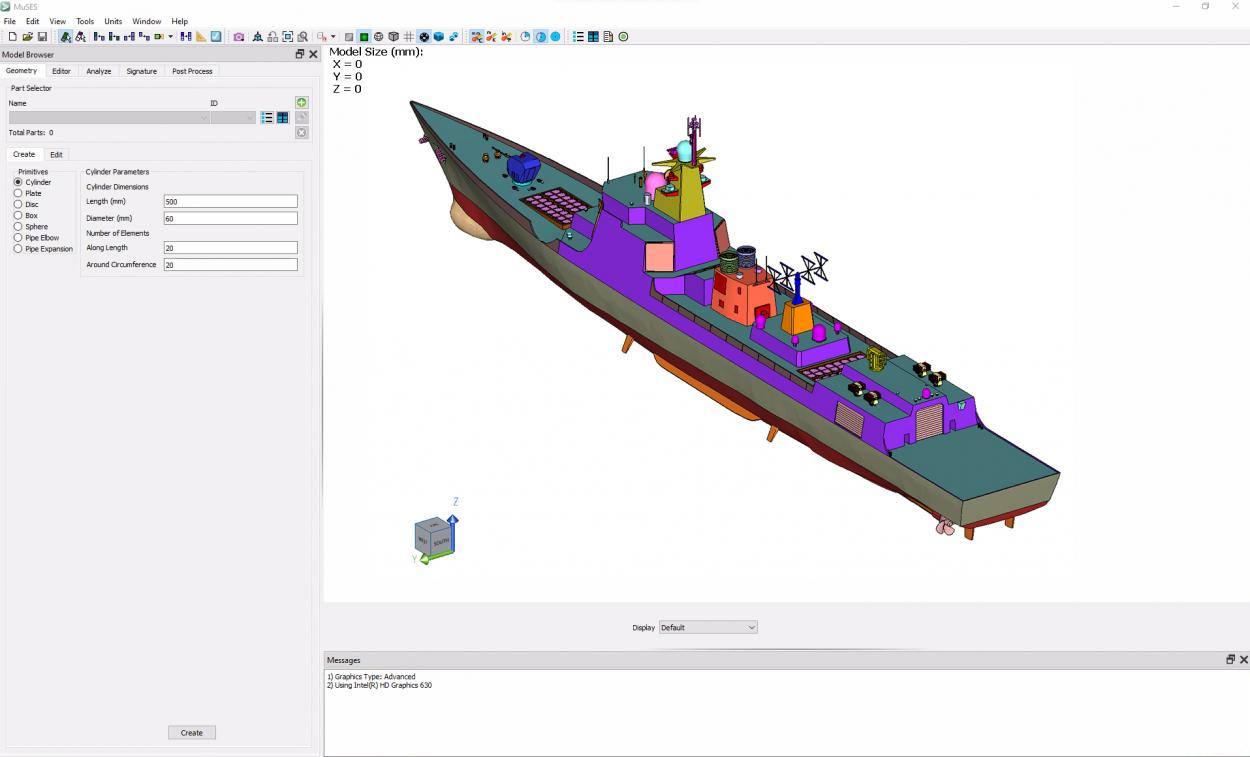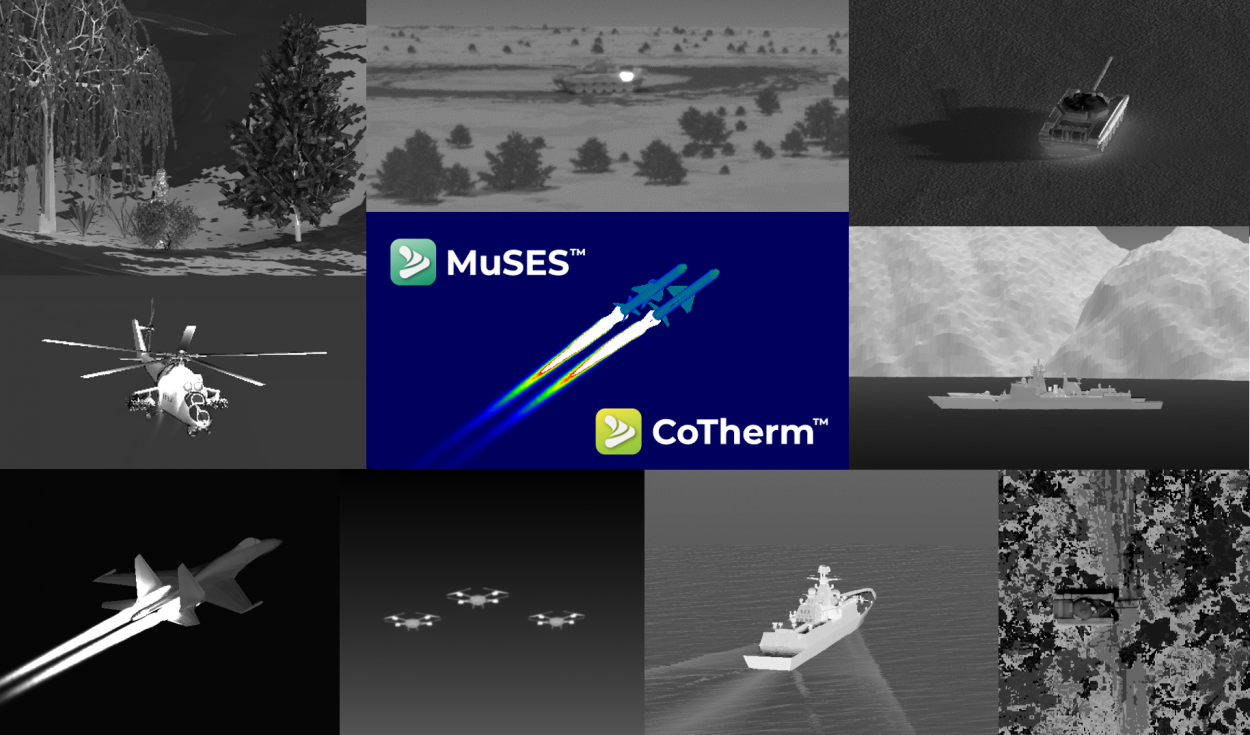EO/IR scene simulation and synthetic image generation for artificial intelligence/machine learning applications can be achieved using MuSES™ and CoTherm™.
There are many motivations for such an automated image-generation process, including the need for large sets of training images and the difficulty of acquiring a suitable measured image library with the desired variation in target range and perspective, scene composition, weather conditions, etc. Training data for machine learning algorithms must represent expected real-world data, and a sufficient quantity for robust learning is essential to achieve optimal classification performance.
MuSES™ for Scene Simulation
A scene simulation based on MuSES™ and CoTherm™ can generate synthetic EO/IR images for various applications, including AI/ML algorithm design and testing. Capitalize on the scene simulation capabilities of MuSES™ by creating a large set of training images synthetically with the desired level of detail/resolution and variation. A state-of-the-art simulation tool, MuSES™ predicts physical temperatures and EO/IR signatures of high-value targets, including natural weather environments, sophisticated mission profiles, realistic terrains from digital elevation map data, and sensor platform motion.
Predicting Temperatures
Realistic signature prediction of target/background scenes in thermal infrared wavebands depends on accurately predicting physical temperatures. MuSES™ provides realistic temperature and EO/IR sensor radiance predictions based on comprehensive heat transfer calculations using high-resolution 3D geometry, component heat sources, and environmental boundary conditions. The MuSES™ rendering process includes thermal emissions, diffuse and directional specular reflections from environmental and solar/lunar illumination sources, atmospheric effects, and reflections from clutter such as trees or bushes. This EO/IR simulation procedure results in a sensor-specific radiance rendering of a target/background scene from a user-prescribed perspective. CoTherm™ provides automation capabilities to manage this scene simulation process, varying the input parameters of interest to generate the desired MuSES™ imagery.
Generating Imagery
Create a large set of training data synthetically with the desired level of detail/resolution and variation. An extensive database of 3D target models exists, including ground vehicles, maritime vessels, fixed-wing and rotary aircraft, human personnel, UAVs, etc. These high-fidelity models have accurate geometric features and are attributed to thermal material properties, optical surface properties, and internal heat sources (e.g., engine, exhaust, and electronics) automatically controlled by user-specified mission profiles. The target models in this database can be combined with various types of terrains or other backgrounds, as well as clutter elements like trees and bushes, to create synthetic scenes for generating radiometric images from the perspective of a virtual sensor.
Develop Your Simulation Strategy
A thorough simulation strategy incorporates the following important capabilities:
- Detailed 3D finite element geometry for high-value targets and a combination of faceted and non-faceted background scenes
- Application of thermal material properties, optical surface properties, internal heat sources, and transient environmental boundary conditions for accurate transient heat transfer calculation
- Ability to incorporate effects of camouflage patterns with spatially varying optical surface properties
- Prediction of scene radiances, which combine temperature-based emissions and directional environmental reflections and illumination sources
- Inclusion of atmospheric impacts such as extinction (due to absorption and scattering) and path radiance
- Ability to specify detector resolution, sensor-target slant range, field of view, sensor perspective, object heading, etc., to increase the robustness of training procedures
- Inclusion of optical sensor system effects (blurring and noise) for more realistic training data
- Ability to automate these capabilities in an efficient process

